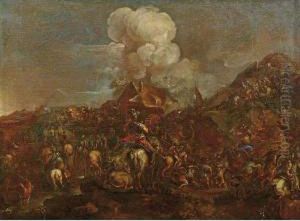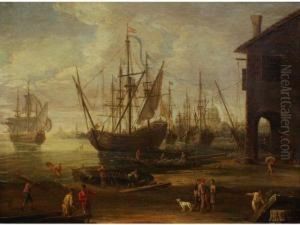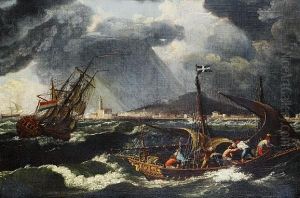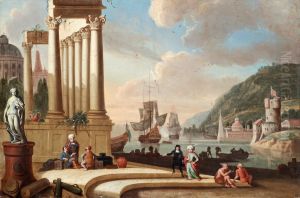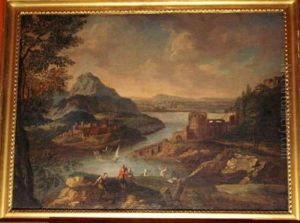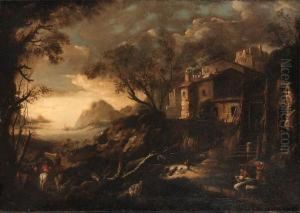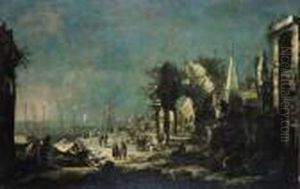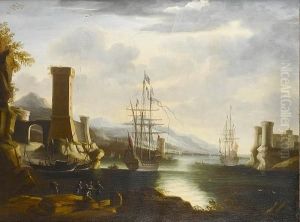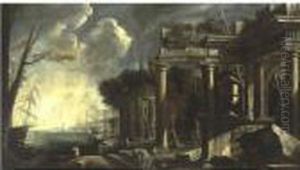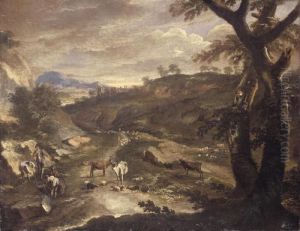Johann Eismann Paintings
Johann Eismann was an Austrian painter born in 1604 in Salzburg, then part of the Holy Roman Empire. He is primarily known for his landscape paintings and works that depict natural scenes with great detail and skill. Eismann's artistic journey began in his native city, where he received his initial training. However, to further his skills and expand his artistic knowledge, he traveled extensively throughout Europe, which was a common practice among artists of the time.
Eismann's travels took him to places like Italy, which had a profound impact on his work. While in Italy, he was particularly influenced by the Venetian school of painting, known for its mastery of color and light. He studied the works of great Italian masters and incorporated their techniques into his own style. After spending several years in Italy, Eismann continued his travels to other parts of Europe, including Germany and possibly the Netherlands, where he absorbed additional influences.
Throughout his career, Johann Eismann developed a reputation for his ability to capture the essence of the landscapes he painted. His works often depicted the interplay of natural elements such as water, sky, and earth, showing a keen observation of the natural world. Eismann's landscapes were not only visually striking but also conveyed a sense of harmony and tranquillity that was appreciated by his contemporaries.
Despite his talent and the quality of his work, Johann Eismann did not gain the same level of fame as some of his peers. Nevertheless, he was a respected artist in his time, and his paintings were sought after by collectors and art lovers. Eismann continued to paint well into his later years, leaving behind a significant body of work that contributes to our understanding of European landscape painting in the 17th century.
Johann Eismann passed away in 1698. His legacy is preserved through his paintings, which can be found in various art collections and museums across Europe. They remain a testament to his skill and dedication to capturing the beauty of the natural world.



